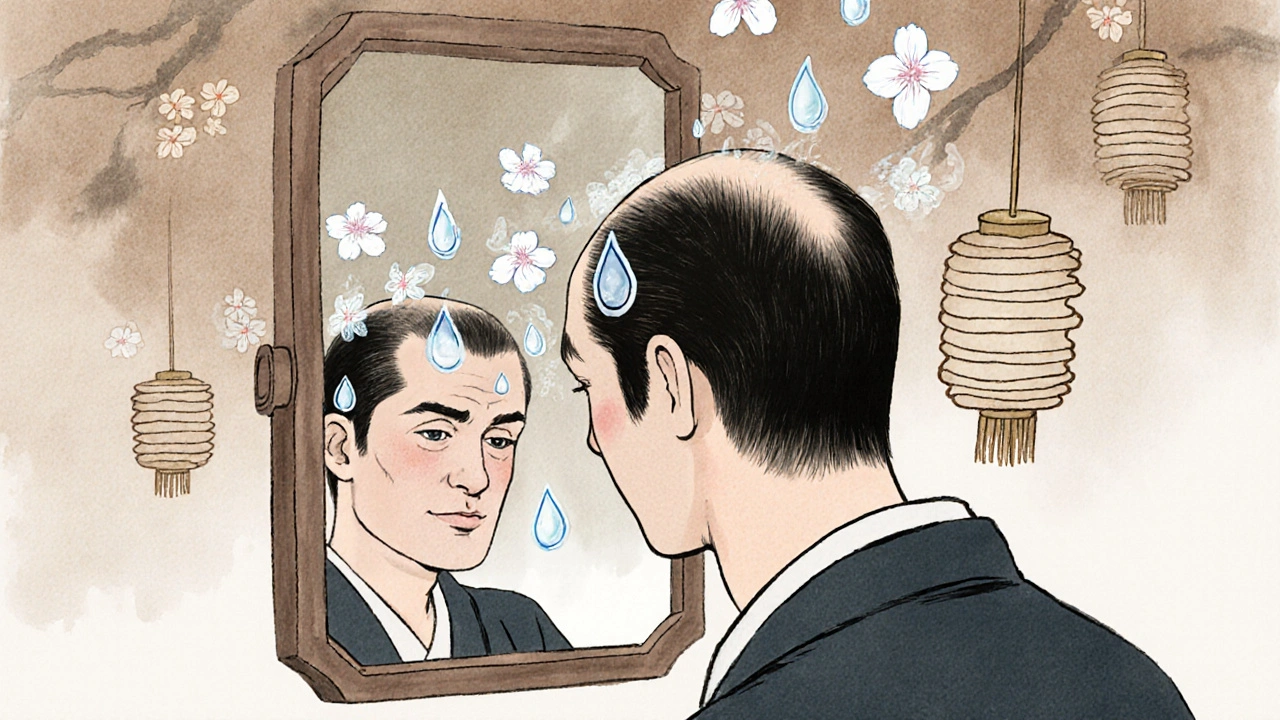Minoxidil: What It Is, How It Works, and What You Need to Know
When it comes to minoxidil, a topical medication approved by the FDA for treating hair loss in men and women. Also known as Rogaine, it’s one of the few over-the-counter treatments with real, documented results—not just marketing hype. Unlike pills that affect your whole body, minoxidil works right where you apply it—on your scalp. It doesn’t cure baldness, but it can slow hair loss and help regrow thinner, softer hair in areas where follicles are still alive.
Minoxidil is often used alongside other treatments like finasteride, but it stands alone as a safe option for people who can’t or won’t take oral meds. It’s available as a liquid or foam, applied daily, and results take time—usually 3 to 6 months before you see anything noticeable. If you stop using it, any hair you gained will likely fall out within a few months. That’s why consistency matters more than intensity. It’s not magic, but it’s science-backed. And unlike expensive laser caps or unproven serums, minoxidil has been tested in clinical trials for decades.
It works best for people with early-stage hair thinning, especially on the top of the scalp. If you’ve been bald for years with no visible follicles, minoxidil won’t bring back hair from dead roots. But if you’re noticing a widening part, a receding hairline, or more hair in your brush than usual, it might be worth trying. Women often use the 2% strength, while men typically use 5%. The foam version tends to cause less irritation than the liquid, which contains alcohol and propylene glycol—common triggers for scalp itching or redness.
Some people experience a temporary shedding phase in the first few weeks. That’s normal. It means the medication is waking up dormant follicles, pushing out old hairs so new ones can grow. Don’t panic. Keep going. The real test is sticking with it past the first 90 days. Many quit too soon because they don’t see results fast enough. But if you’re patient, you’ll find out whether it works for you.
It’s not a one-size-fits-all solution. Genetics play a big role. So does age, overall health, and whether you’re using other medications that might interfere. People with heart conditions should talk to a doctor before using it, because minoxidil was originally developed as a blood pressure drug. And while it’s safe for most, it’s not for everyone. If your scalp is irritated, infected, or burned, hold off until it heals.
What you’ll find in the posts below are real, practical insights from people who’ve used minoxidil—or tried alternatives like finasteride, microneedling, or natural oils. Some share their before-and-after photos. Others explain how they managed side effects. There are guides on how to apply it properly, how to avoid mess, and what to do when it stops working as well as it used to. You’ll also see comparisons with other treatments, so you know what to expect if you’re considering switching.
Rogaine 2% Minoxidil vs Alternatives: What Actually Works for Hair Loss
Rogaine 2% minoxidil is a proven hair loss treatment, but it's not the only option. Compare its effectiveness, cost, and side effects against generics, finasteride, PRP, laser therapy, and natural alternatives to find what works best for you.
read more